The full-back position has altered so much in the last decade, with full-backs now having more offensive responsibilities than ever. A perfect example of this is through Liverpool’s full-backs, Andrew Robertson and Trent Alexander-Arnold, who have seven and twelve assists respectively this Premier League campaign.
Even though full-backs have responsibilities on-the-ball, they can still have a great impact off the ball, one of the clearest responsibilities of a full-back is to offer an overlap and create space for the winger on the ball, essentially being a decoy. This tactical analysis will be a tactical theory, looking at the different ways teams can use full-backs as decoys in transition.
Direct pass into the winger
Wingers in the modern game often will look to receive the ball to feet, many are inverted and want to drive into the half-spaces. This means that centre-backs are tasked with finding the wingers with direct passes, Bayern Munich and Borussia Dortmund are two sides who use this in their tactics. One way of a centre-back finding the winger directly in transition is through using a full-back as a decoy.
When the centre-back has possession in the build-up, the ball-side winger will unlikely have much space to work with; with both the opposition fullback and winger in close proximity. This is mostly due to the high positions that the possession-side full-backs occupy.
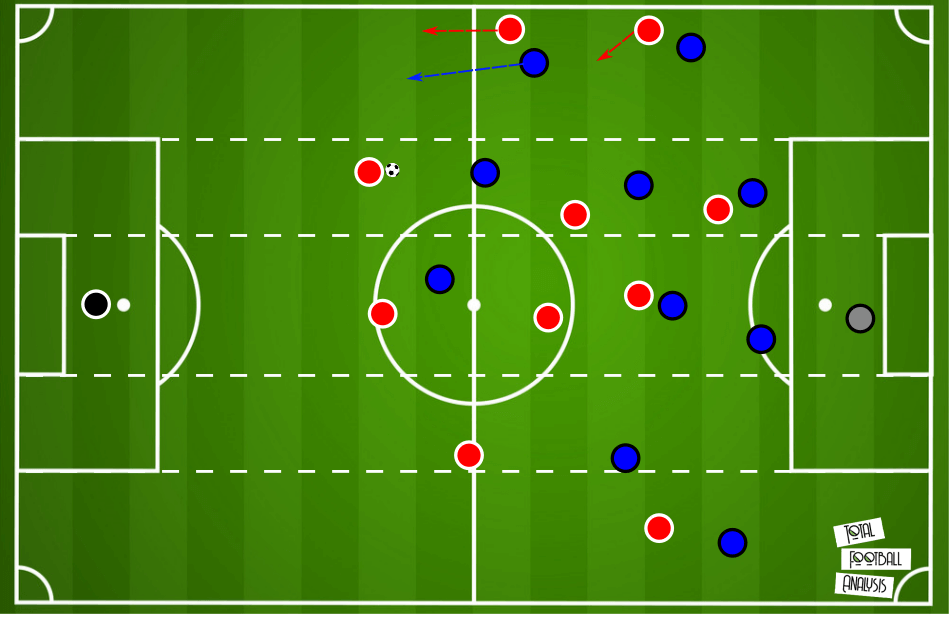
In order to create space for the winger to receive the ball, the nearside full-back can drop into a deeper area. This will lead to the opposition winger following the ‘decoy’ run from the full-back so that he does not receive the ball short. This, in turn, creates space for the centre-back to play the direct pass into the winger if he drops off from the opposition full-back.
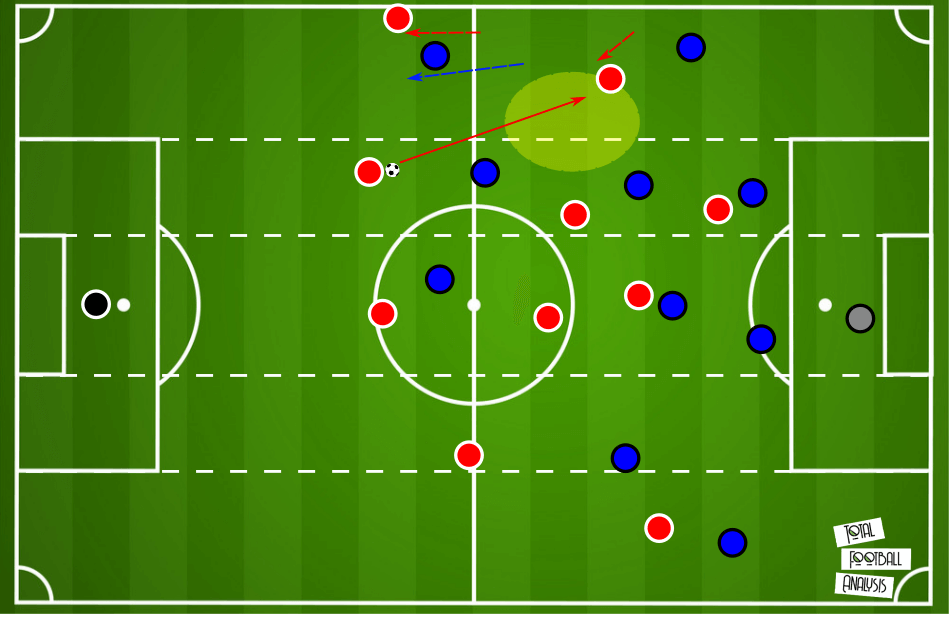
Shown below is a clear example of this passage of play being used by Bayern Munich, with the full-back being used as a decoy to find the winger directly. Jerome Boateng has the ball at his feet, just entering the middle third of the pitch. Alphonso Davies, who is operating at left-back for Bayern, is initially in a high and wide position; he then drops onto the same line as Boateng. This brings the opposition winger forward and opens up a larger passing lane and area of space for the ball to be played straight into Ivan Perisic on the left-wing, who is not in the image. The ‘decoy’ movement from Davies to move the opposition winger was a clear factor in Bayern being able to progress the ball directly into Perisic in transition.
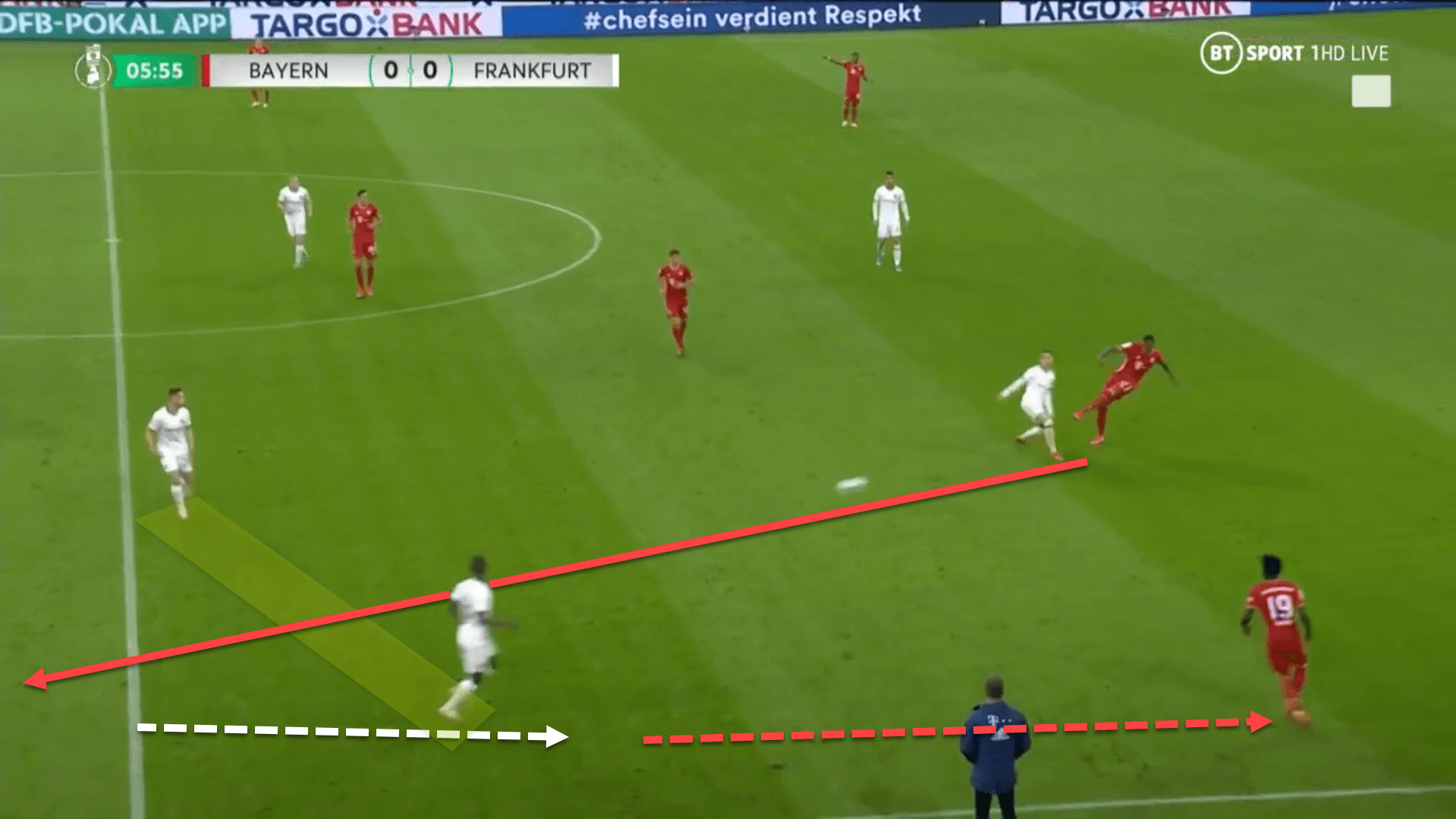
Creating space for the wingers in the half-spaces
As mentioned previously in the analysis, wingers enjoy operating in the half-spaces. Full-backs can be used as ‘decoys’ to allow more space when his winger is on the ball. This allows the winger to move into the half-spaces and to make things happen in the final third, this kind of overlapping run is one of the most common for full-backs to make. I will now explain this approach.
When in transition, a pass to the winger will sometimes allow him to be one on one against the opposition full-back. The full-back will know that the winger wants to access the half-space, so he will look to push the winger wider. An overlapping run from the near-side full-back could potentially be a ‘decoy’ which could create space for the winger to move into the half-space with the ball.
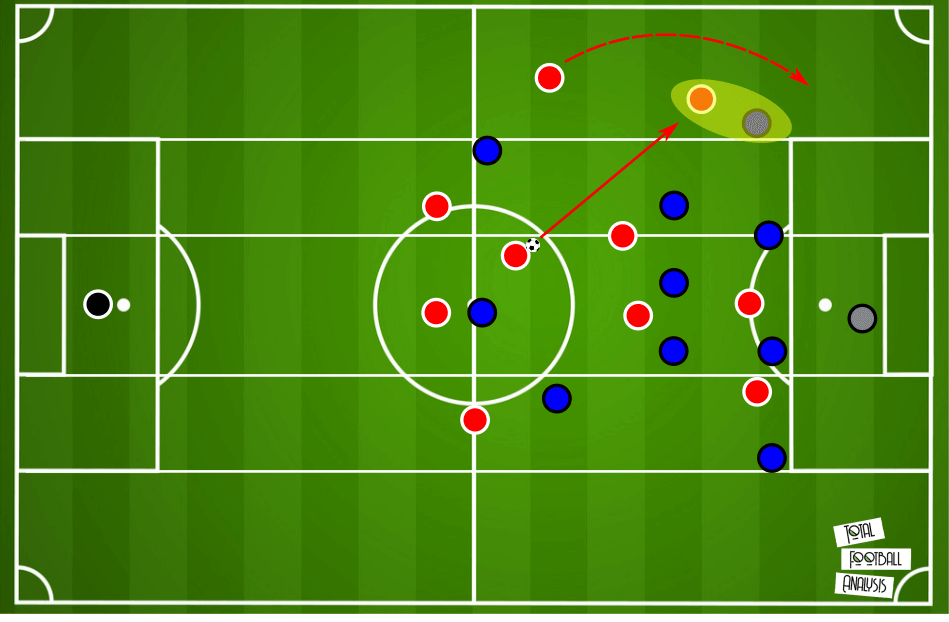
This overlapping ‘decoy’ run will cause the opposition full-back to track this run; in turn, opening up space in the half-space for the winger to move into. He will then have multiple options in either a pass, cross or shot. If the run from the full-back is not followed, this run could become a dangerous one and a potentially passing option for the ball-carrying winger.
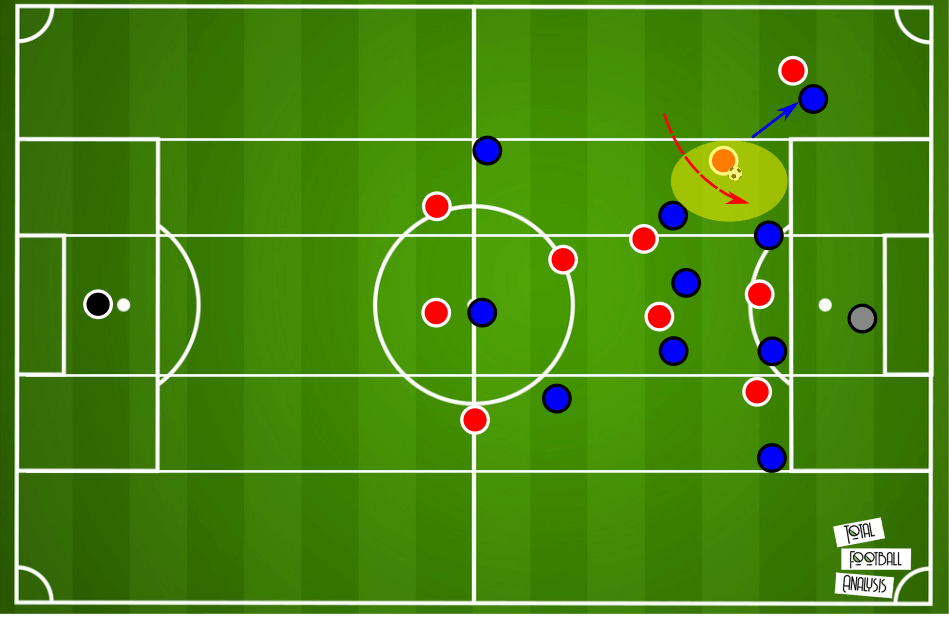
Here is an in-game example of this ‘decoy’ overlapping run being made by Lucas Hernandez of Bayern. With the ball being played to Perisic on the wing, Hernandez initiates the ‘decoy’ overlapping run, which confuses the opposition full-back as he has two different men to mark. He decided to follow the run from Hernandez and this allows Perisic to move inside into the half-space. This gives him an appropriate angle for multiple different options on the ball, he decides to cross into the area.
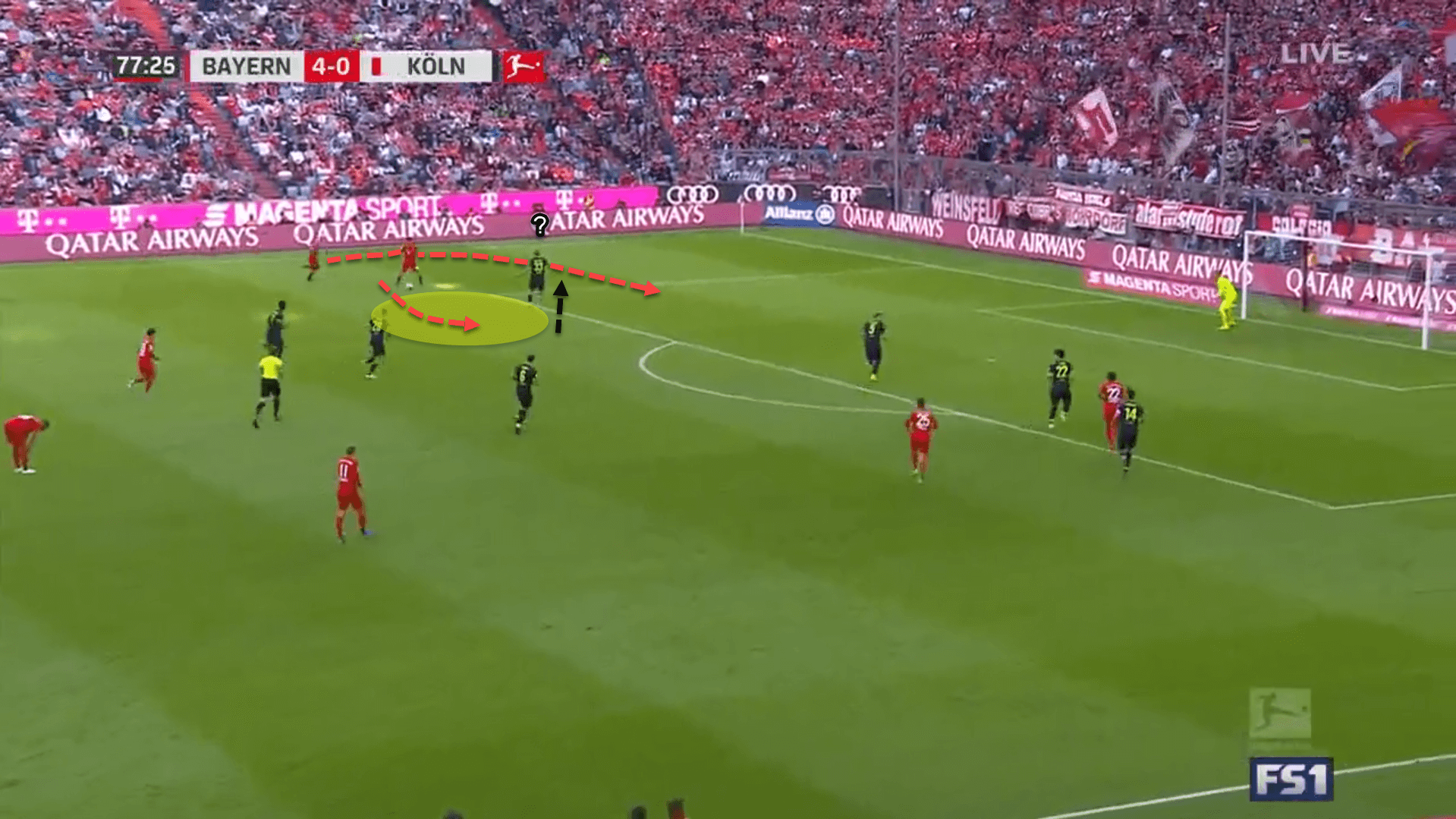
Progressive run by centre-back
A progressive run from a centre-back can be a great way to progress the ball for a team in transition. It allows more players to be in the opposition half as well as it is an unexpected way for teams to progress a lot of the time, meaning it can be quite effective.. It still requires space for the centre-back to drive into and this space can be created by using the near side full-back as a ‘decoy’.
Firstly, a progressive run from a centre-back is more successful in wider areas, to avoid running into the opposition midfield, with many teams preferring compactness in their defensive shapes. A centre-midfielder dropping into the backline allows the centre-backs to position themselves wider, so that when they receive the ball; they can drive into the wider areas, which then offers more passing lanes to open up too. The only problem is the positioning of the opposition near-side winger.
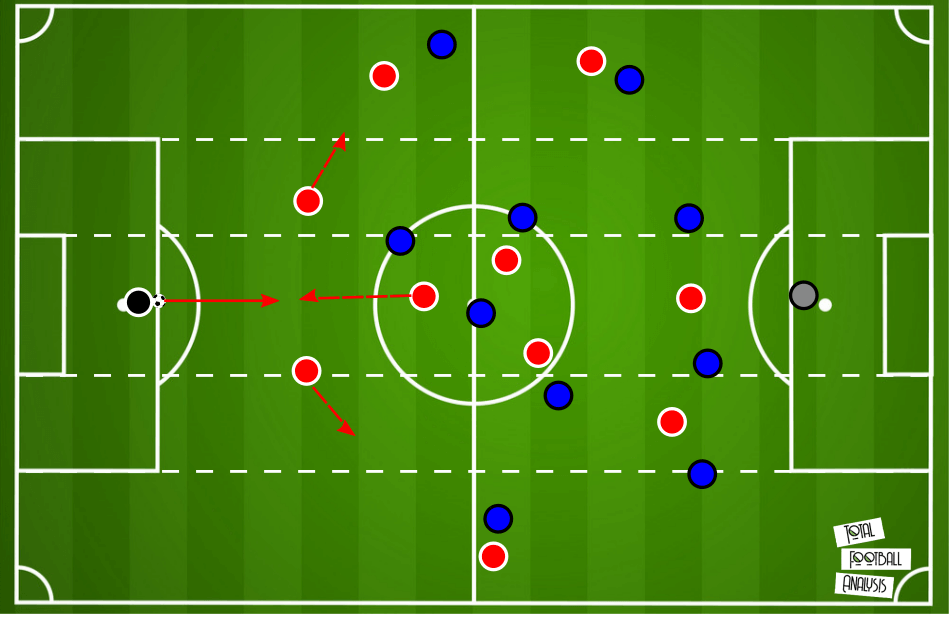
The role of the ‘decoy’ full-back, is to make space for the centre-back to progress into, this is done through a forward run down the flank. It is simple enough, but with enough intensity, the opposition winger will be forced to follow this run. This creates the progressive space for the centre-back to drive into. Then the progressive run will create a problem for the nearest centre-midfielder of the opposition; who will have to decide whether to stay centrally and cover that space or to pressure the ball-carrying centre-back but leave space centrally to exploit.
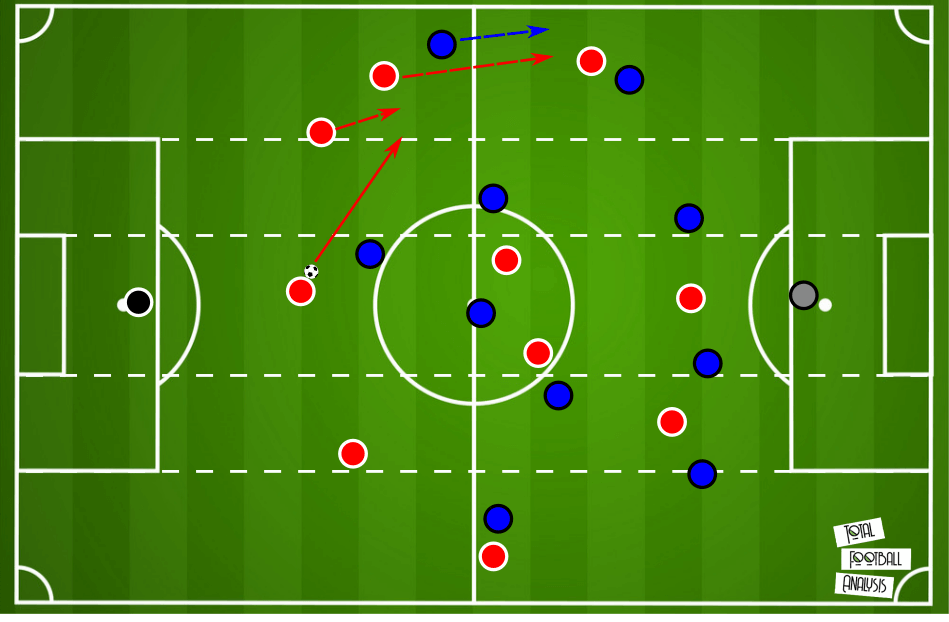
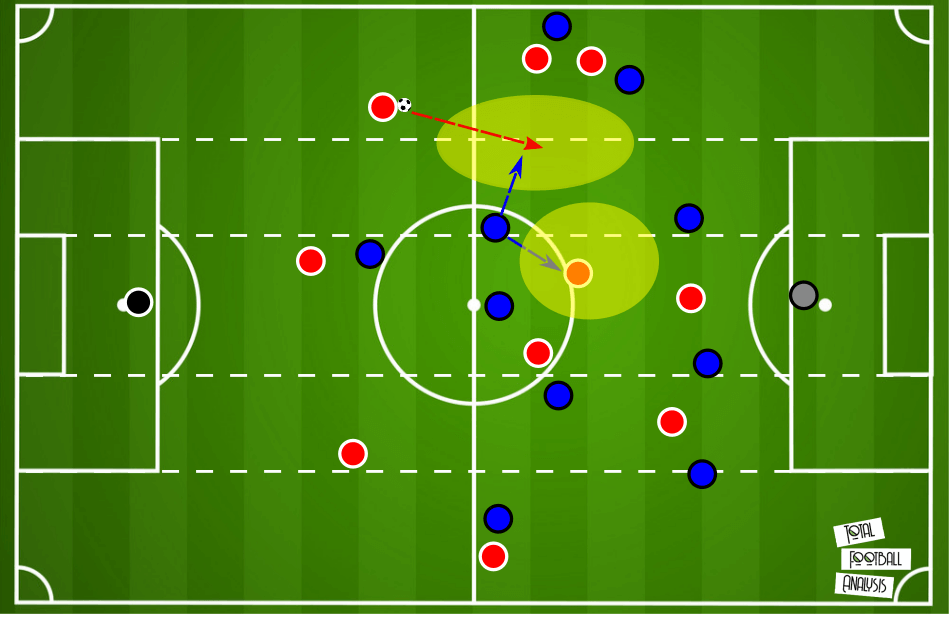
It is likely that the opposition midfielder will leave his position to press the advancing centre-back to attempt to stop his progression. This then allows the centre-back to pass into the space left by the opposition, or even better; progress into it himself, however, the centre-back would have to be an astute dribbler of the ball to do this. This progress would then allow the team to attack against the opposition backline, as they excluded the front and middle lines due to the progressive run made by the centre-back, which could only be made after the ‘decoy’ run from the full-back in the build-up.
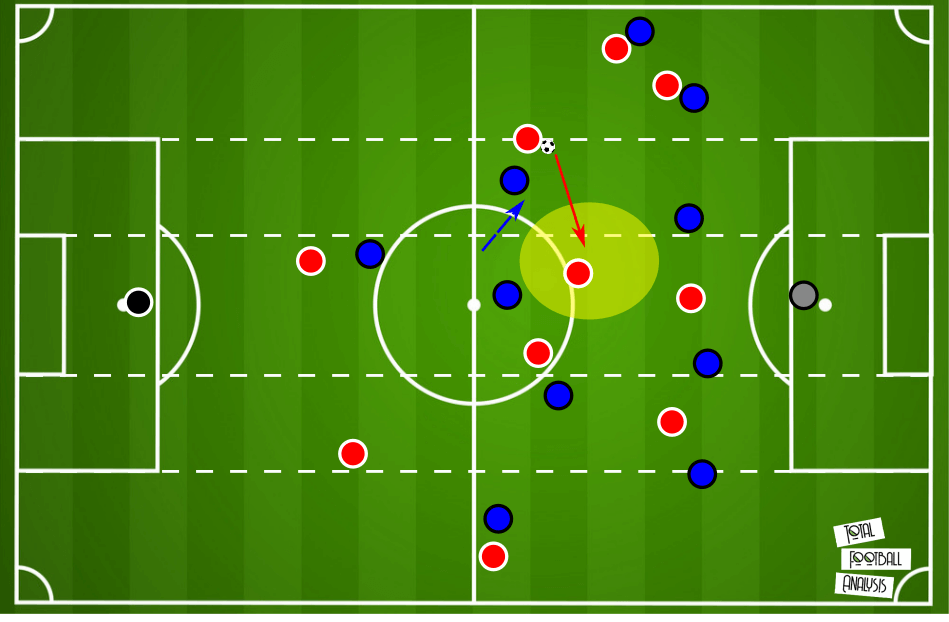
Here is an in-game example of Bayern utilising this ‘decoy’ run from the full-back, Davies, in order to create space for a progressive run for the centre-back, David Alaba. First of all, we can see the movement from the centre-midfielder, Joshua Kimmich, to move into the backline, allowing the centre-backs to move into wider areas.
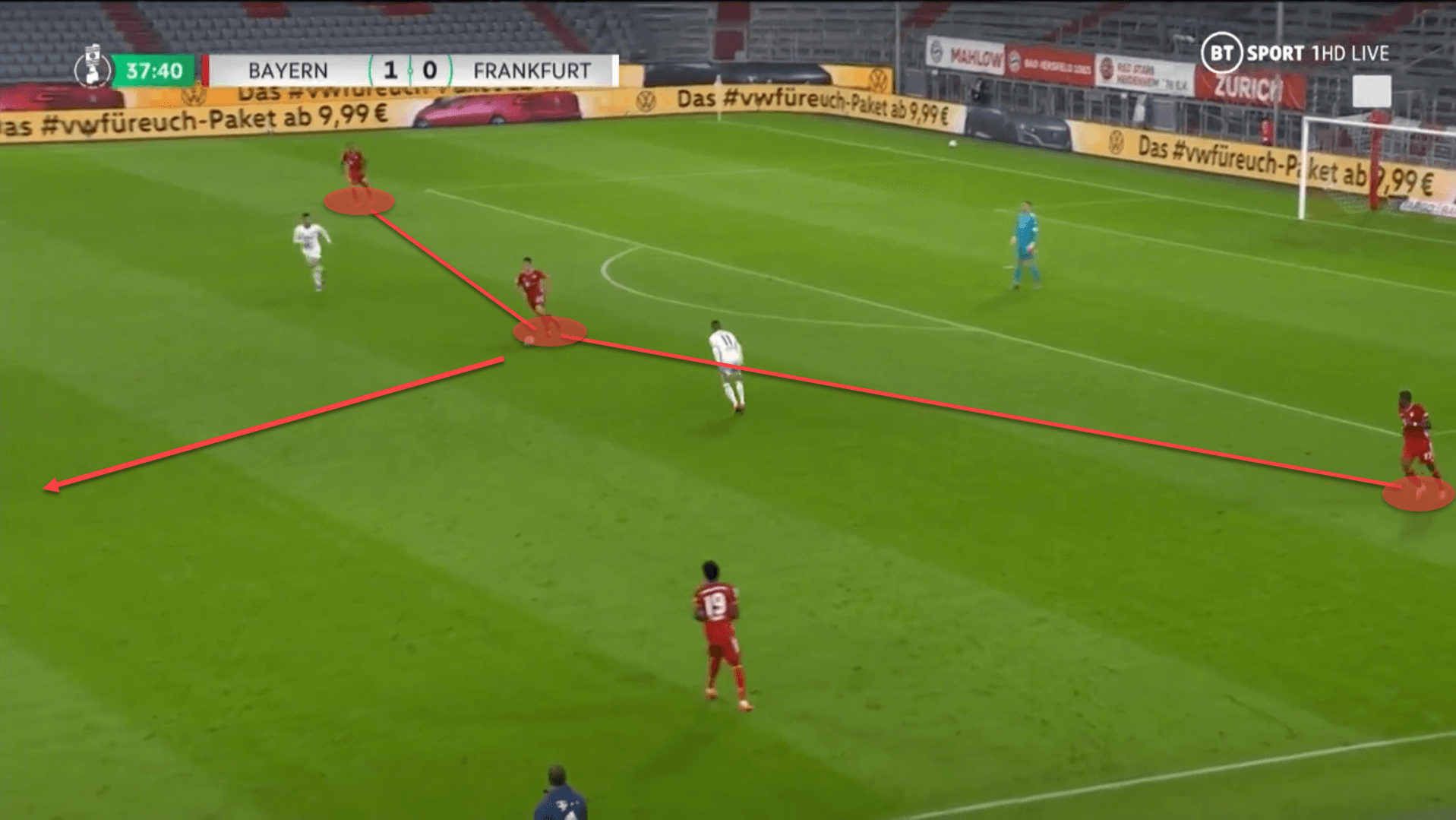
Next, although the opposition right-back has initially been moved out of position into a central area, Davies’ forward run forces him to retreat into a defensive position, rather than attacking the right flank and stopping Alaba from progressing into open space. Instead, Alaba progresses into the open space created by Davies’ ‘decoy’ run.
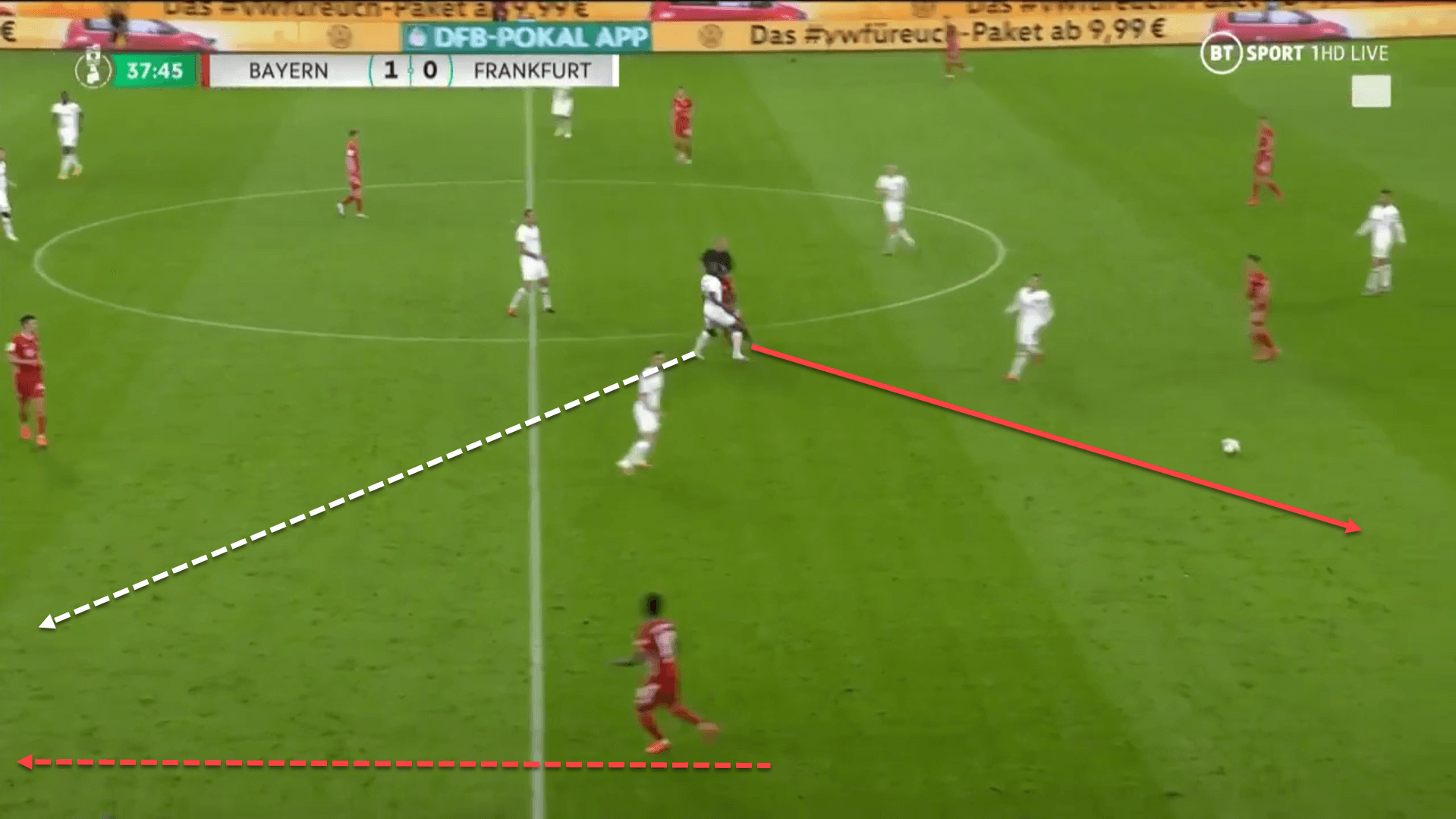
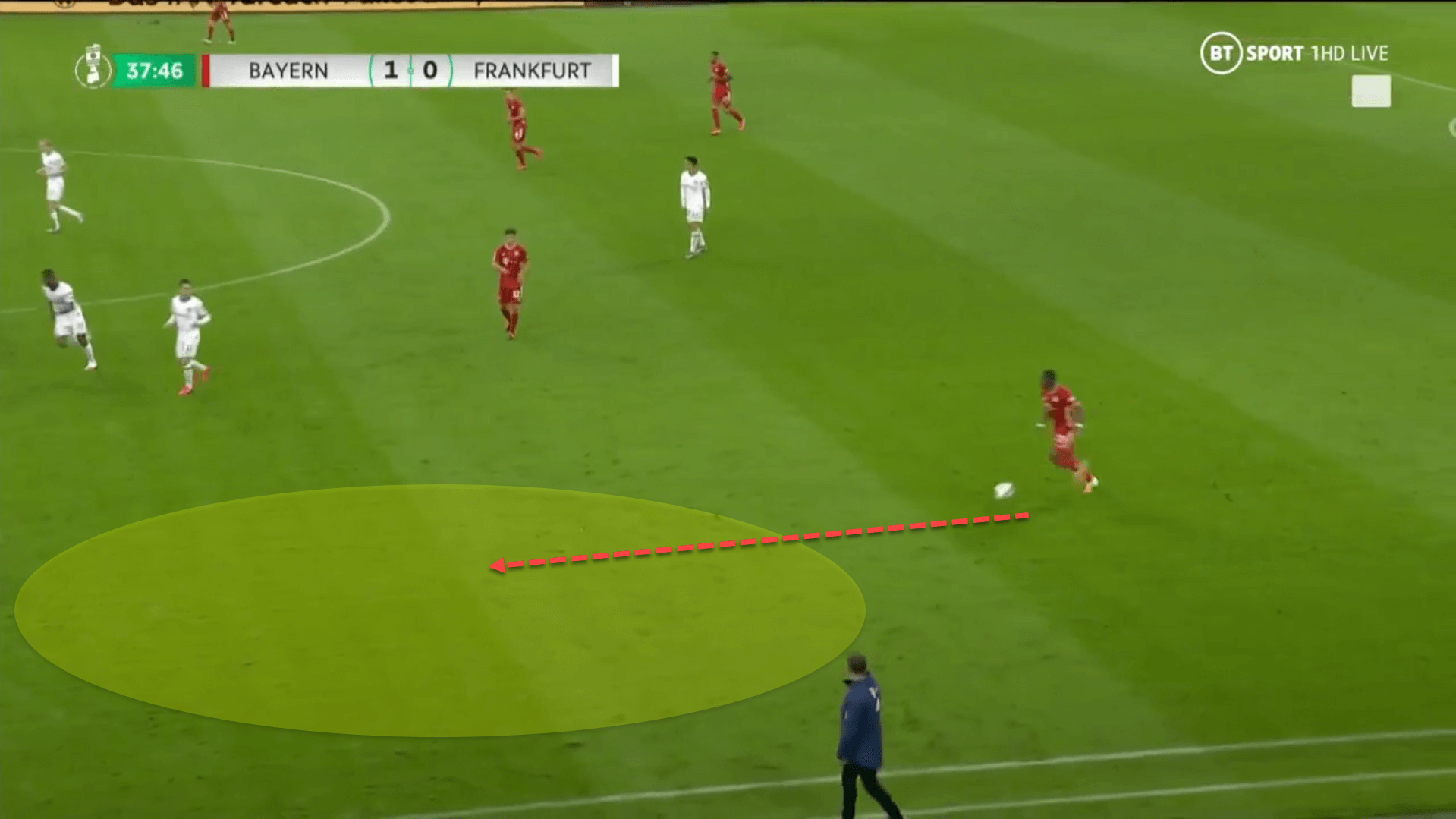
Next, the movement from the opposition centre-midfielder towards Alaba is made and space centrally is open. Alaba has the quality to dribble past this player and this allows him to further progress the ball up the pitch due to the space in the middle made from the initial run from the opposition midfielder towards Alaba.
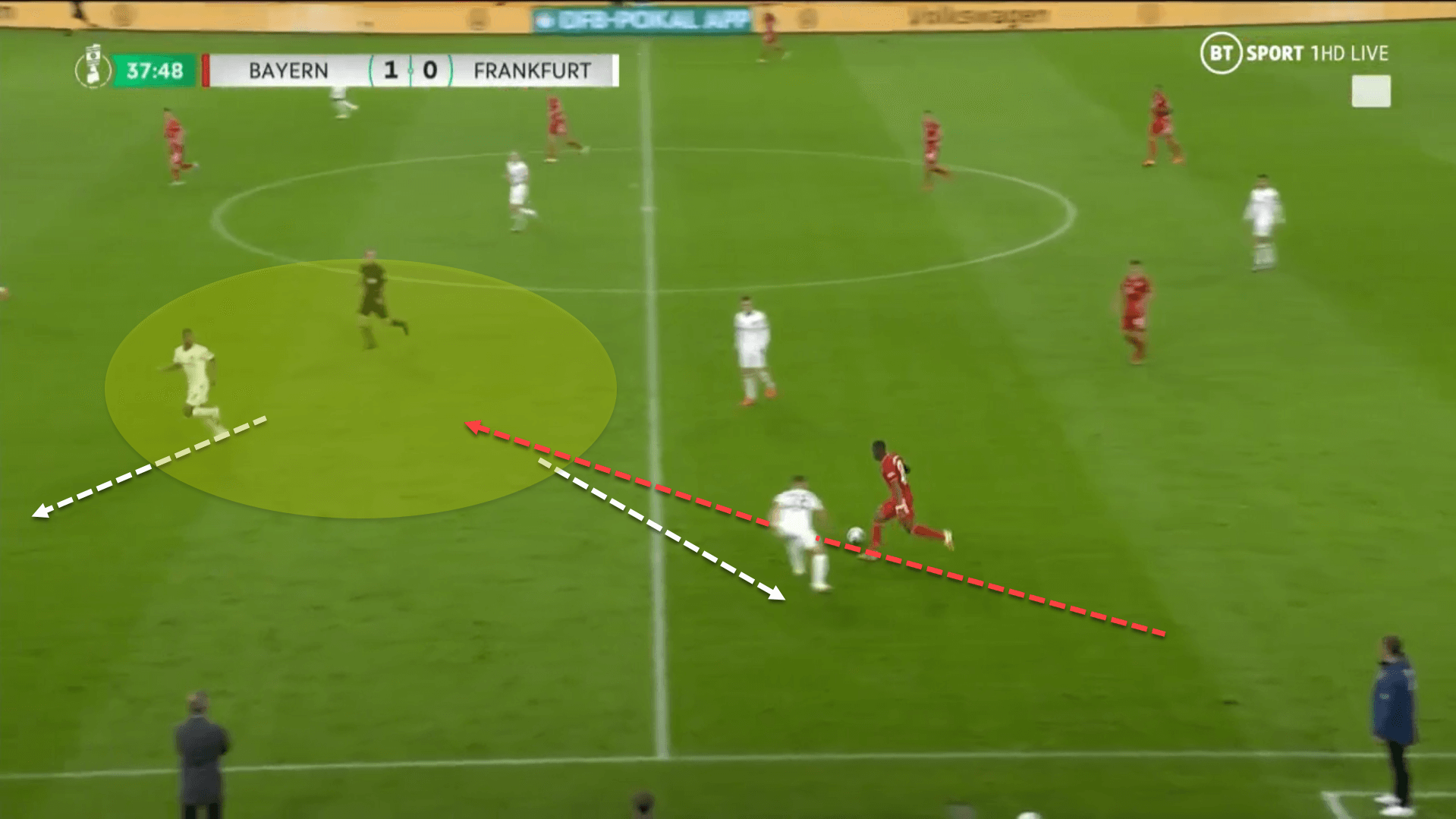
Conclusion
This analysis has looked at some different ways that full-backs can influence the progression of the ball in transition, without being on-the-ball. Their movement when off the ball can create spaces and exploit the opposition.
The use of a decoy in the full-back area has shown to be effective in three different ways in this analysis, there are of course many more ways they can be effective yet I cannot delve into these otherwise the analysis will be extremely long! Ultimately, the decoy runs made by the full-backs can be a clear and viable way of progression for a team in transition.





Comments